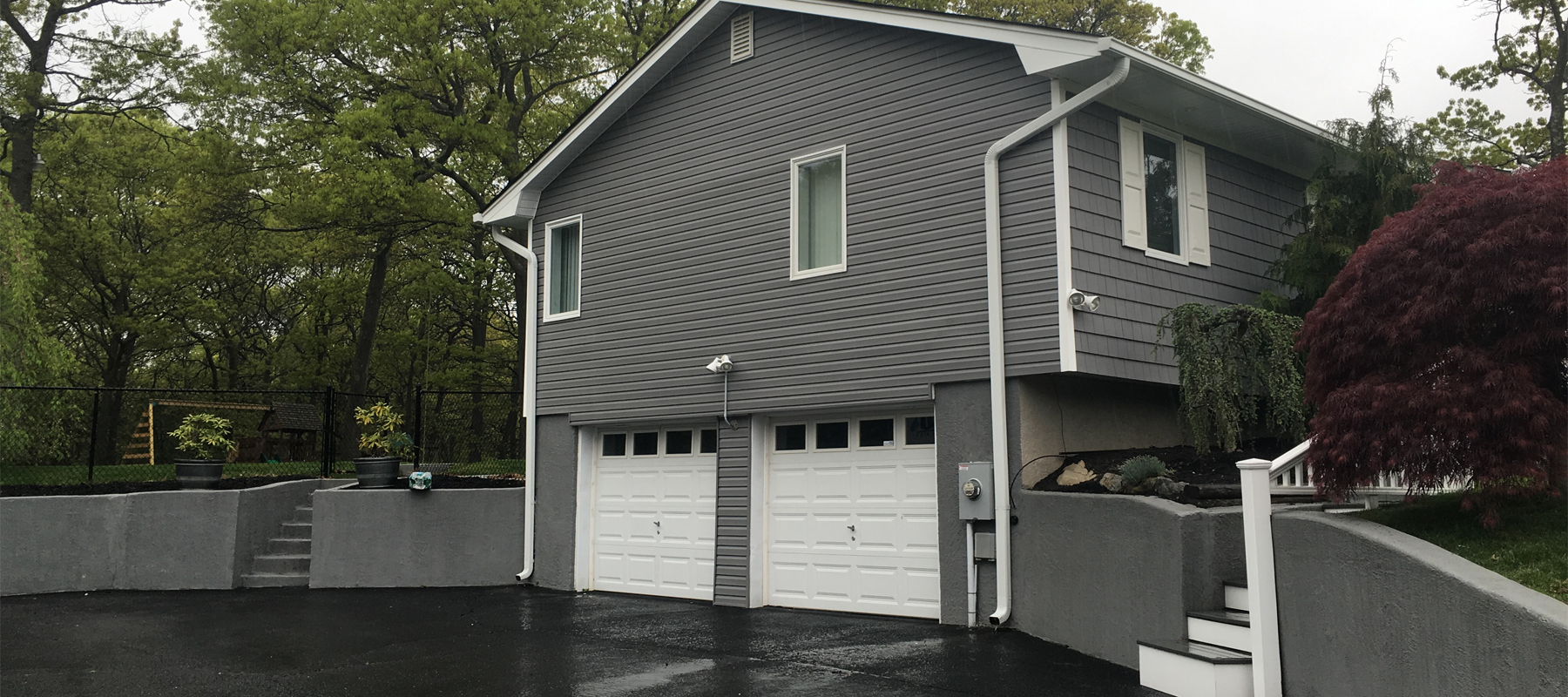Liquid Siding Costs, Considerations, and Benefits - A Homeowner's Handbook
Last Updated: October 05, 2023

Fact Checked By: Ryan Maguire
On This Page
Liquid vinyl siding, sometimes known simply as liquid siding, is a thick coating of wax-like material that is sprayed directly on to a building surface.
A combination of resins and polymers, liquid siding is extremely durable, often lasting 30 years or longer, and has a substantially lower installation cost than any other type of siding.
Vinyl Liquid Siding Installation Cost #
Vinyl liquid siding refers to polymeric resin-based coatings that form a durable vinyl film when applied to a home's exterior. Here are typical vinyl liquid siding installation costs:
- Basic vinyl coatings - $2-3 per sq ft
- Premium vinyl coatings - $4-6 per sq ft
- Primers and additives - $0.50-1 per sq ft
Labor
- Surface prep and repairs - $1-2 per sq ft
- Apply primer and base coats - $1-2 per sq ft
- Apply finish coat(s) - $1-2 per sq ft
Other Costs
- Equipment rentals - $300-800
- Scaffolding - $300-1000
Total Costs
- 1,500 sq ft home - $7,000-15,000
- 3,000 sq ft home - $12,000-25,000
Key Cost Factors
- Surface area and height
- Number of coats needed
- Extent of surface prep required
- Specialty application tools
In summary, expect to pay $8 to $12 per sq ft for professional vinyl liquid siding installation. This covers materials, labor, equipment, surface prep, and multiple coats.
Top Liquid Siding Brands and Pricing #
| Brand | Description | Price Range |
|---|---|---|
| PAREXUSA WeatherSeal | Acrylic and elastomeric coatings | $2-$4 per sq ft |
| Rust-Oleum Restore | Advanced acrylic coating | $3-$5 per sq ft |
| Kool Seal Elastomeric | 100% acrylic elastomeric | $4-$6 per sq ft |
| Rhino Linings | Polyurethane, polyurea, epoxy coatings | $6-$10 per sq ft |
| Liquid Rubber | EPDM rubber-based coating | $8-$12 per sq ft |
As you can see, top brands for liquid siding range from affordable acrylic coatings at $2-$4/sq ft up to premium products like Liquid Rubber at $8-$12/sq ft. The coating type and thickness impact costs.
Real Life Liquid Siding Cost Examples #
Here are some real-life examples of liquid siding installation costs from homeowners we interviewed:
"We had the exterior of our 1,500 sq ft ranch style home coated in a premium acrylic liquid siding. With materials, labor, rentals, and prep work it cost us $18,500 to have it professionally applied." - Mark S., Ohio
"I applied a basic vinyl liquid siding to my 2,000 sq ft colonial myself to save costs. With the coating materials, primer, spray equipment rentals, and a few weekends of work it cost me around $9,800 in total." - Amanda D., Florida
"For our commercial building renovation we hired a contractor to install a durable silicone-based liquid siding. The 3,000 sq ft exterior coating project cost $68,000 including extensive prep work, scaffolding, and specialty application equipment." - Thomas C., New York
"Our HOA chose an inexpensive acrylic coating to refresh the siding on all the units in our condo complex. The per unit cost worked out to around $4,500 for materials and labor." - Jessica P., California
"We had the wood siding on our Victorian home restored instead of fully replaced using a thick flexible epoxy coating for $22,000. It filled all the cracks and restored the look." - James A., Maine
In general, liquid siding costs reported seem to range from $5,000 for DIY budget projects on smaller homes up to $30,000+ for premium commercial installations. Most standard professional jobs on homes under 3,000 sq ft fall in the $10,000 to $20,000 range.
Liquid Siding: How it Works #
While it's always a good idea to check a company's references and only hire those who guarantee their work, you can generally expect a qualified contractor to install liquid vinyl siding in the following manner:
- Cleaning: A liquid solution to kill mold and mildew is applied and afterwards the home is pressure washed, removing the dead organisms along with other surface debris and contaminants.
- Prepare Exterior for Painting: This involves a number of procedures, including removing and replacing rotten or damaged wood, scraping rough surfaces, filling gaps and cracks, priming bare wood, and sanding.
- Application of Undercoating: Once the home has been masked, taped, and covered to protect windows, doors, hardware, decking, and other areas from overspray, a base coat that ensures a properly-bonded finish coat is applied.
- Final Coat: After the base coat dries and is inspected for uniform adherence, the final coat of liquid siding is applied.
The Benefits of Vinyl Liquid Siding #
Liquid siding is a great alternative to paint and other siding materials for reasons that include the following:
- Maintenance Free: Spray on siding can last 30 years or longer, during which time you'll never have to repaint your home. Instead of scraping and painting your home every few years, keep it looking like new with a simple spray of the garden hose.
- Works on any Surface: Whether your home is currently clad in wood, vinyl, metal, brick, or concrete, it can be newly covered with a layer of liquid vinyl paint.
- Beauty: The look of your home will not be significantly altered by liquid vinyl paint. In fact, with an enormous color palette to choose from-far more extensive than what metal and vinyl siding can offer-liquid vinyl can enhance a home's curb appeal.
- Value: In addition to saving you money in repainting and maintenance costs, liquid siding is an excellent insulator that can help to lower your energy bills. And because contractors don't have to measure, cut, or remove the existing siding, installation costs are significantly lower than with other types of siding. In most cases, liquid vinyl costs the same or less than traditional vinyl siding.
Pros and Cons of Liquid Siding #
| Pros | Cons |
|---|---|
| Seamless appearance | Shorter lifespan than traditional sidings |
| Fills cracks and crevices | Not great for complex architectural details |
| Excellent adhesion and durability | Surface imperfections can show through |
| Wide range of color options | Reflective, shiny appearance |
| Low maintenance required | Specialized application equipment/skills needed |
In summary, liquid siding provides a seamless, protective finish that adheres well and resists moisture intrusion. But the appearance, shorter lifespan, and application challenges may make traditional sidings a better choice for many homeowners.
Sources:
